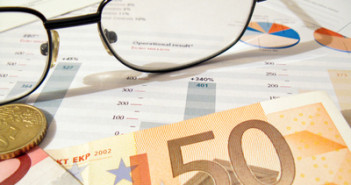EUR/USD dropped sharply on Wednesday, as the Federal Reserve announced a third $10 billion taper and said that interest rates could rise in early 2015. The pair continues to lose ground on Thursday and has dipped below the 1.38 line. In economic news, German PPI missed the estimate, as Eurozone inflation remains weak. It’s a busy day in the US, with three key events on the schedule – Unemployment Claims, Existing Home Sales and the Philly Fed Manufacturing Index.
Here is a quick update on the technical situation, indicators, and market sentiment that moves euro/dollar.
EUR/USD Technical
- EUR/USD edged higher in the Asian session, touching a high of 1.3845 late in the session. The pair has reversed directions in the European session and has dropped below the 1.38 line.
Current range: 1.3773 to 1.3830.
Further levels in both directions:Â 
- Below: 1.3773, 1.37, 1.3650 and 1.3560.
- Above: 1.3830, 1.3894, 1.3940, 1.40, 1.4149 and 1.4307.
- 1.3830 is a weak resistance line. 1.3894, protecting the 1.39 level, is next.
- On the downside, 1.3773 is under strong pressure as the euro slide continues. 1.3700 follows.
EUR/USD Fundamentals
- 7:00Â German PPI. Exp. 0.2%, actual 0.0%.
- Day 1 – EU Economic Summit.
- 12:30 US Unemployment Claims. Exp. 327K.Â
- 14:00 US Existing Home Sales. Exp. 4.65M.
- 14:00 US Philly Fed Manufacturing Index. Exp. 4.2 points.
- 14:00 US CBÂ Leading Index. Exp. 0.3%.
- 14:30 US Natural Gas Storage. Exp. -58B.
- 20:00 US Bank Stress Test Results.
*All times are GMT
For more events and lines, see the Euro to dollar forecast.
EUR/USD Sentiment
- Yellen talk boosts dollar: The Federal Reserve wrapped up its policy meeting on Wednesday, the first meeting headed by Janet Yellen. The decision to trim QE by another $10 billion was widely expected, but her comments at the follow-up press conference gave the dollar a big boost against its major rivals. Yellen said that the Fed was on track to wind up QE in the fall, and could start to raise interest rates six months later. This is a more aggressive approach towards higher rates than the markets had expected, and the dollar responded by climbing over a cent against the euro.
- German inflation misses mark: German data has been one of the few bright lights in the Eurozone economy, but the German locomotive is also suffering from persistently low inflation. The German Producer Price Index came in at a flat 0.0%, short of the estimate of +0.2%. Earlier in the week, the German Wholesale Price Index posted a decline of 0.1%, its fourth drop in five releases. Mario Draghi continues to insist that there is no inflation problem in the Eurozone, but the markets may not share his optimism, as Eurozone inflation indicators continue to look listless.
- Ukraine crisis escalates: Western countries are scrambling to respond to Russia’s lightning takeover of the Ukrainian region of Crimea. The EU meets later on Thursday and may announce further sanctions to punish Russia. Meanwhile, Ukraine says it will order its troops in Crimea to withdraw to the mainland, in order to de-escalate the situation. The crisis has set off the worst confrontation between Russia and the West in over twenty years.
- German court confirms ESM: The European Stability Mechanism, which is the Eurozone’s bailout fund, was confirmed as legal by the German Federal Constitutional Court on Tuesday. Germany is the biggest contributor to the EUR 970 billion fund. In February, the court deferred a decision on the Outright Monetary Transactions, which is credited with saving weak members of the Eurozone, to the European Court of Justice.



